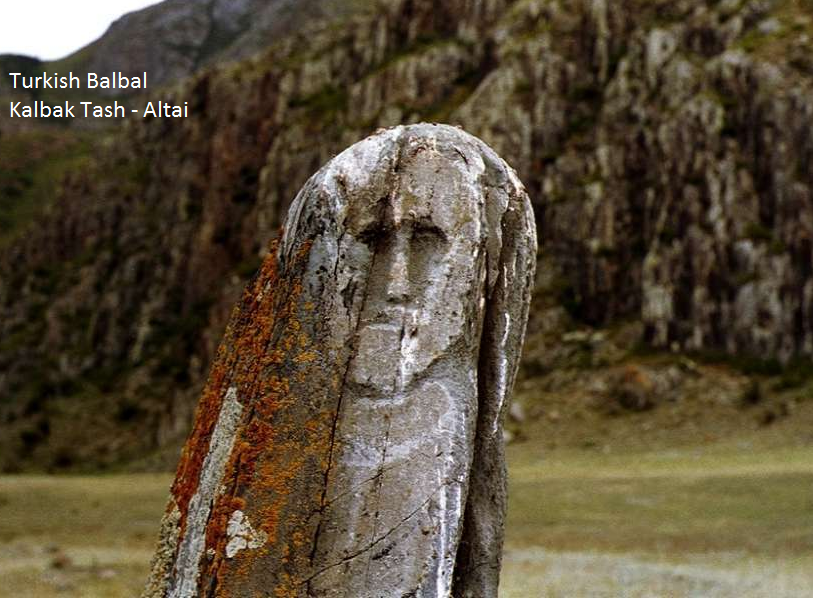Bengitaş Bengütaş
Kuzey Moğolistan ve güney Sibirya düzlüklerinde "uçan rengeyiği" tasvirlerinin bulunduğu dikilitaşlar.
3 ila 5 metre boylarında olup küçük gruplar halinde taşkurganların höyüklerin oralara dikilir. Orta Asya'da 900'ün üzerinde Bengitaşı var ve 700 tanesi Moğolistan topraklarında.
3000 yıl önce göçebe Türkler tarafından dikilmeye başlandı. Kimmerler, İskit/Sakalar, Hunlar ve diğer Türk kavimleri....
Genellikle granit veya yeşiltaşlardan yapılır. Rengeyiği çok önemli bir yere sahiptir. Erken tarihli taşlarda rengeyikleri basit, ilerleyen dönemlerde ayrtıntılı çizimler ve uçan rengeyikleri...
Bazen rengeyikleri güneşdiski taşır bunlar Tanrıyı temsil eder. Rengeyiği, kuş, güneş Şaman/Kam'ın göksel yolculuğu, ruhsal dönüşümünü de temsil edebilir....
Savaşçılara ait mumyalarda da rengeyiği dövmelerine rastlanır. Geyiğin rehberliğinde ruh cennete gider.
Bu geyik figürleri bir kadın kam'ı da temsil edebilir, çünkü anatanrıça aynı zamanda geyik ile de tasvir edilmiştir. Ve Kamların çoğu kadındır.
Moğolistan
İskit/Saka Türkleri MÖ.6.yy ila 5.yy arasında buraları yurt tutmuştur.
Ulan Bator'da demir çağından (MÖ.5.yy-3.yy) kalma , daha sonra Hun Türkleri tarafından da kullanılan bir mezar ortaya çıkarılmıştır.
Göktürk 600 , Uygurlar 745, Yenisey Kırgızlar 840....
Altay Dağları Moğolistan, Çin ve Rusya sınırında 2006 yılında MÖ.5.yüzyıla ait , 30/40 yaşlarında, sarışın olan İskit/Türk savaşçısının mezarı bulundu.
Sürekli donuk olan topraktan Temmuz ayında çıkarılan mumya 2600 metre derinlikteydi. Ölüm sebebi tespit edilememiştir.
Savaşçı çok iyi konumda olan iki atı ile birlikte gömülmüştü. Koyun yünü astarı ile samur kürk ceketi, yün pantalonu ve keçe botları ile araştırmacılar soylu bir adama ait olduğunu söyler.
İskitler Türkçe konuşurdu ve bugünkü Türklerin de atasıdır.
TÜRKLERİN İZİNDEN
SI Rudenko
Hunlar ve Noinulin höyük Kültürü.
/ / Leningrad:. 1962 kitap Rusça
İskit kültürü. MÖ.4.yy - bronz; döküm. 17.4x5.6 - Kuban
Pazırık karşılaştırması için değerli arkadaşım Nuray Hanım'a teşekkür ederim. link
8 BACAKLI RENGEYİĞİ
GÜMÜŞ - MÖ. 4.YÜZYIL
BULUNDUĞU YER TRAKYA
ODİN'İN ATI SELİPNİR GİBİ 8 BACAKLI....(MS. 400-1100) !
RENGEYİKLERİN KUTSALLIĞI...
BOYNUZLARI ARASINDA GÜNEŞ DİSKİ...
TİPİK İSKİT SANATI....
Tjängvide Taşı - Odin ve Sleipnir (MS.400-1100)
Bir çeşit ev "Yurt/ Külle" ya da Şaman
Moğolistan da Vahşi Yaşam
Deer Stones
There are over 900 deer stones in Central Asia and South Siberia, of which 700 are in Mongolia alone. Erected by Bronze Age nomads Turks, 3000 years ago. Cimmerians-Scythians/Saka-Huns and other Turkish Tribes.
Deer stones are usually constructed from granite or greenstone, depending on which is the most abundant in the surrounding area. Reindeer feature prominently in nearly all of the deer stones. Early stones have very simple images of reindeer, and as time progresses, the designs increase in detail.
A gap of 500 years results in the appearance of the complicated flying reindeer depiction. Reindeer are depicted as flying through the air, rather than merely running on land. Sometimes the reindeer hold a sun disc or other sun-related image in their antlers, representing God. (Tengri)
Tattoos on buried warriors contain deer tattoos, featuring antlers embellished with small birds' heads. This reindeer-sun-bird imagery perhaps symbolizes the shaman's spiritual transformation from the earth to the sky: the passage from earthly life to heavenly life. As these deer images also appear in warrior tattoos, it is possible that reindeer were believed to offer protection from dangerous forces. Deer spirit served as a guide to assist the warrior soul to heaven.
And it can also be a noblewoman or a Kam woman (shaman), they were often reprensented by a reindeer. (Mothergoddess)
Mongolia
The Scythian Turks community inhabited western Mongolia in the 5-6th century BC. A vast iron age burial complex from the 5th-3rd century, later also used by the Xiongnu (Huns/Turks), has been unearthed near Ulaangom Ulan Bator.
Gökturk Khaganate in 600 AD and Uyghur Turks in 745 AD, in 840 Yenisei Kirghiz Turks.
In 2006 the mummy of a Scythian warrior was found, 2,500 years old, was a 30/40 year-old man with blond hair, found in the Altai, Mongolia.
The mummy was found in a difficult to access part of the Altai mountain region at an altitude of 2,600 meters (8,500 feet) in an area bordering Mongolia, China and Russia. Scientists from Germany, Mongolia and Russia came across the intact burial mount of the Scythian warrior in permafrost ground at the end of July. The Scythians were a nomadic people who lived around 700 years BC in a region that spanned from southern Russia and the Ukraine to the Dnieper River.
The warrior, whose cause of death has not been determined, was buried in full dress. He wore a fur coat made of marmot fur with sheep's wool lining and adorned with sable.
Beneath the fur coat, traces could be found of woven wool pants. The man's feet were covered by knee-high felt boots. The man was buried together with two horses whose bridles was still in good condition. Parts of the animal carcasses were also still intact -- including flesh, skin and hide. Researchers believe the decorations indicated he was a man of nobility.
And the Scythians spoke Turkish ,
they are the ancestors of todays Turks.
_________











































